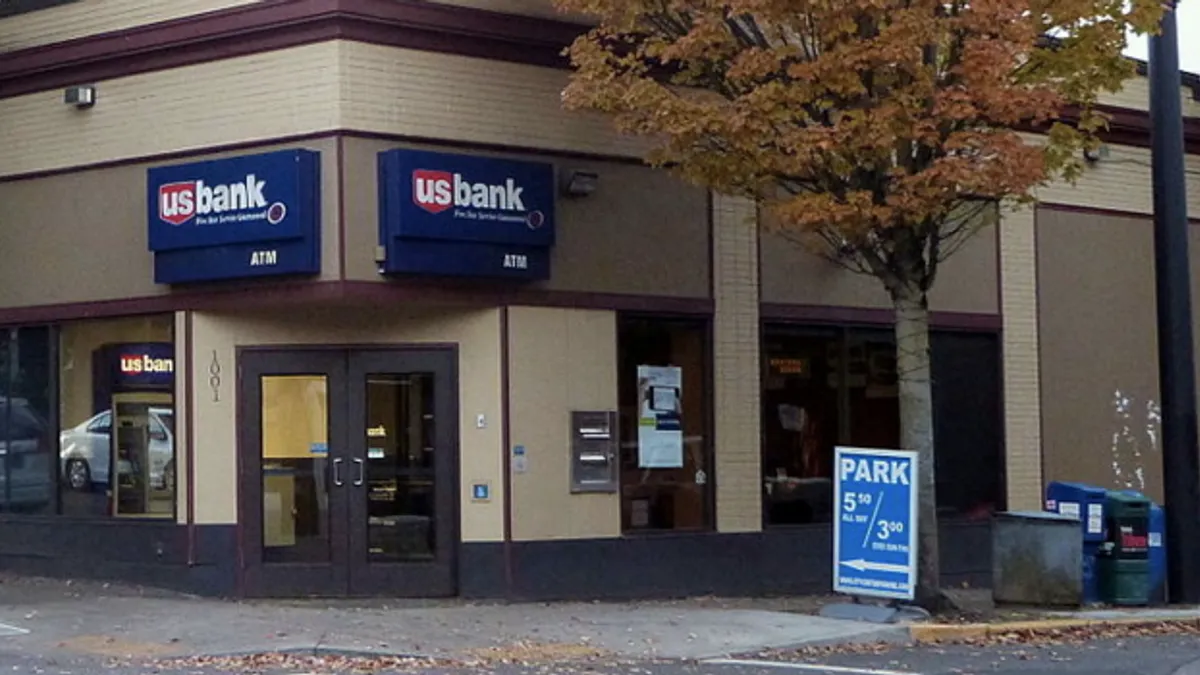Dive Brief:
- U.S. Bank on Wednesday reported a profit of $1.6 billion in the third quarter, a 17% drop from the $1.9 billion it posted a year ago but more than double the $689 million the Minneapolis-based lender reported in the second quarter.
- The bank set aside $635 million for loan losses in the quarter — and nearly 20% of that, $120 million, was related to the credit-card portfolio it acquired from State Farm. However, like its fellow big banks, U.S. Bank saw a sharp decline in its quarterly loan-loss figure from three months earlier. The $635 million is just over one-third of the $1.7 billion the bank set aside in the previous quarter.
- Consistent with comments U.S. Bank CEO Andy Cecere made in May, the bank is accelerating its branch closure plan.
Dive Insight:
Cecere said Wednesday the bank's original branch closure strategy involved shuttering between 10% and 15% of locations by early 2021. To date, it has closed about 10% of those, he said.
But now, the bank wants to close an additional 15% of its branches in that time frame. About 75% of new closures will involve branches that were already temporarily closed due to COVID-19, Cecere said.
The bank stands to save about $150 million through the branch closures, Chief Financial Officer Terry Dolan said, adding the impact will be felt as soon as the first quarter of next year.
Some of the savings will be invested into digital capabilities, as digital sales now account for more than half of all loans, executives said. "That only accelerated during the COVID period, and the result is what we’re doing," Cecere said, adding the company believes it will find additional savings by cutting other corporate real estate.
Aside from branches, executives at the nation's fifth-largest commercial bank spent a good portion of Wednesday's earnings call discussing credit quality, which Dolan said deteriorated in the third quarter.
"Future levels of reserves will depend on a number of factors," he said, adding that another stimulus aid package could be beneficial.
On the consumer side, Cecere said all indicators are "more positive than you would expect" given the current economic environment. He said some of that is due to the first stimulus package and enhanced unemployment benefits, which created a bridge for many families.
"But I do expect that, at some point in 2021, we'll start to see an acceleration of deterioration in the consumer portfolio once those benefits start to wear down," Cecere said.
Dolan said consumer delinquencies are "in a really good spot," but commercial industries including hotels and malls remain somewhat problematic.
The bank's net interest income stood at $3.23 billion in the third quarter, a slight decrease from the $3.28 billion U.S. Bank posted a year ago.













